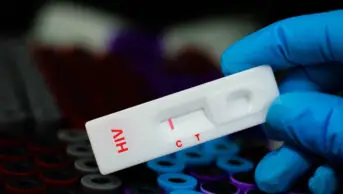
Shutterstock.com
Cancer.
The word alone arouses fear and anxiety. Many cancers can be successfully treated, and many people living with cancer can achieve a good quality of life, but diagnosis can have a heavy emotional impact. People with cancer often fear the treatment as much as, or more than, the disease itself.
Treating cancer at home
Surgery and radiotherapy can be provided only in the professional environment of a hospital, but subsequent pharmacological therapy must often be administered intravenously — this requires regular outpatient visits. Frequent trips to the hospital can be stressful, and disrupt the social and working lives of patients and their families.
Therapy administered at home, with minimal disruption to daily life, would be welcomed by many patients. Interviews with patients living with chronic conditions regularly identify a wish to ‘live a normal life’ without the need to plan each day around taking or administering medicines.
Treating patients in hospital is more expensive than treating them at home, so economic benefits could be reaped if patients were supported to self-administer. Although some patients learn to self-administer subcutaneous injections, many would prefer to avoid needles and injections, and this is driving efforts to develop non-injected administration of all kinds of therapy, including treatments for cancer.
Administering medicines without injection
Proteins, peptides and other biotherapeutics are not orally bioavailable so must be administered by injection — this is one of the challenges in the move towards their use. In other cases, damage to the mucosa of the gastrointestinal tract, poor oral bioavailability or poor pharmacokinetics, may lead medicine formulators to adopt a parenteral route of administration. Needleless injectors, microneedle patches and other technologies have been explored in an effort to reduce the invasiveness of delivery, but the oral route is still the preferred option.
Discovering what nanotechnology can offer in cancer therapy
Fortunately for patients and healthcare systems, nanotechnology may offer a solution for some drugs used in cancer therapy. The term covers a wide range of technologies and delivery systems, some of which are more novel than others, but there is no doubt that pharmaceutical scientists are starting to better understand the possibilities, and limitations, that nanoparticles offer in drug delivery.
Nanoparticles — miniscule carriers formed of polymers, lipids or biological materials — deliver drugs or probes to their target: diseased cells. They can sometimes be absorbed intact from the gastrointestinal tract — meaning drugs that can, but are currently delivered only through injections, could become orally deliverable.
For many of us, nanotechnology is something we only read about — either in the news or in scientific journals — and not something we engage with, so, as medicines experts, we have many questions. How might a nanoparticulate cancer drug be formulated? What excipients will be included? How would it be manufactured and what testing is needed to ensure it will work as intended? How will it behave in the body and what impact will it have on the pharmacokinetics of the drug? Will the formulation influence the side-effect profile or change the safety profile of the drug? How expensive will these products be and how will they be handled in the pharmacy? As yet, not so many answers.
Nanotechnology on pharmacy’s world stage
But this may be about to change. Progress in this important area of research and drug development has inspired a session on ‘Breakthroughs in pharmaceutical nanotechnology for oral delivery of anticancer drugs’ at the FIP World Congress of Pharmacy and Pharmaceutical Sciences, to be held in Glasgow in September 2018. During the session, speakers will address not only the technical aspects of nanotechnology, but also the pharmacokinetic challenges of delivering anticancer therapy orally, and the socio-economic impact of treating patients at home.
As pharmacists and pharmaceutical scientists we aim to improve the lives of our patients. No single solution is appropriate for all individuals or for all drugs. Some good ideas fail to deliver, and disappointment often precedes success. Nanotechnology has been the subject of hype and criticism, but if we can harness it to make cancer therapy more accessible and friendly to patients, it will be a significant advancement for health care.
On 2–6 September 2018, Glasgow will host the 78th FIP World Congress. This is the first time that the Congress has been held in the UK for nearly 40 years, making it a brilliant learning opportunity for pharmacists and pharmaceutical scientists in Great Britain. This year’s theme is ‘Pharmacy: Transforming outcomes’. Find out more at: https://www.fip.org/glasgow2018/


